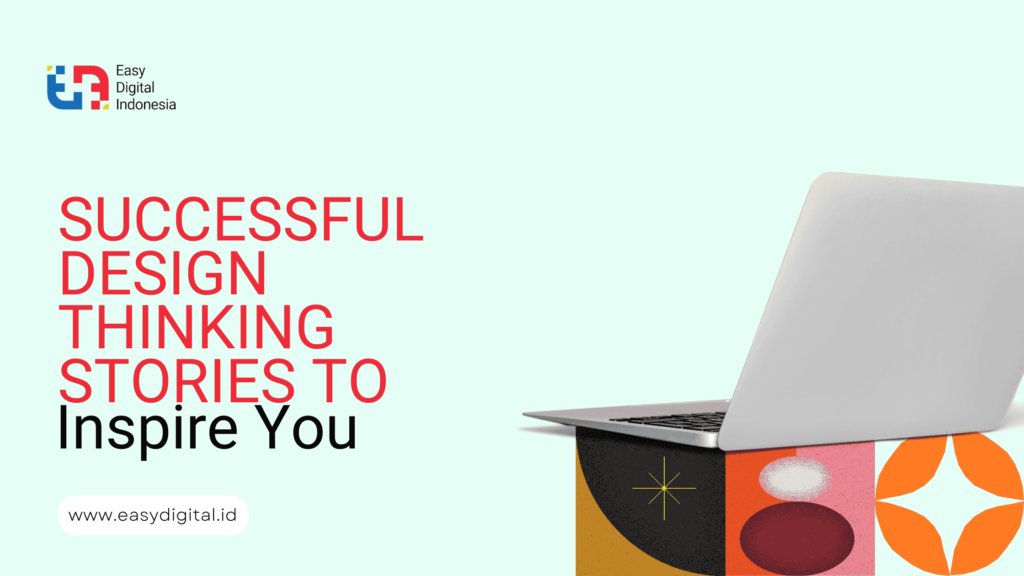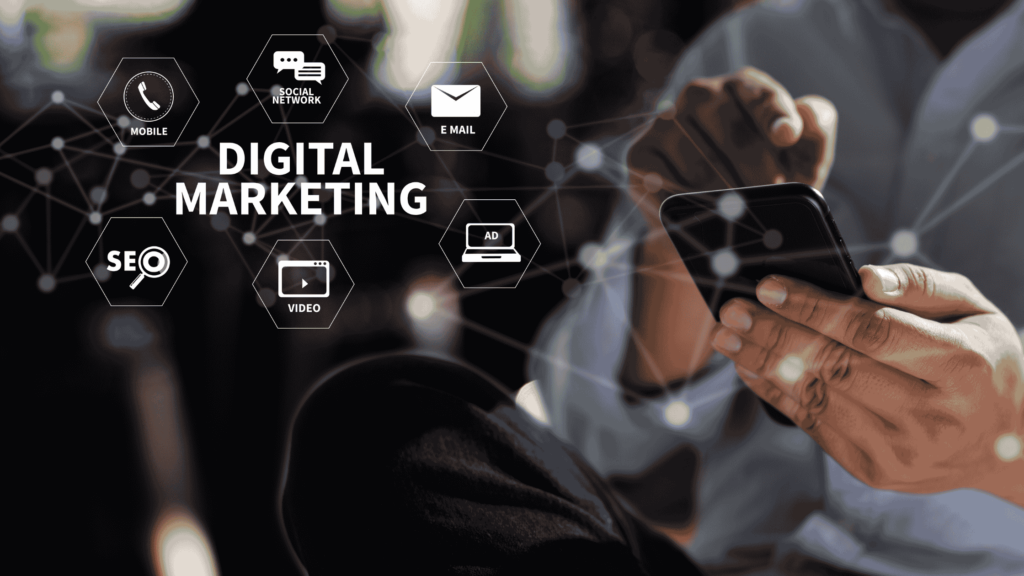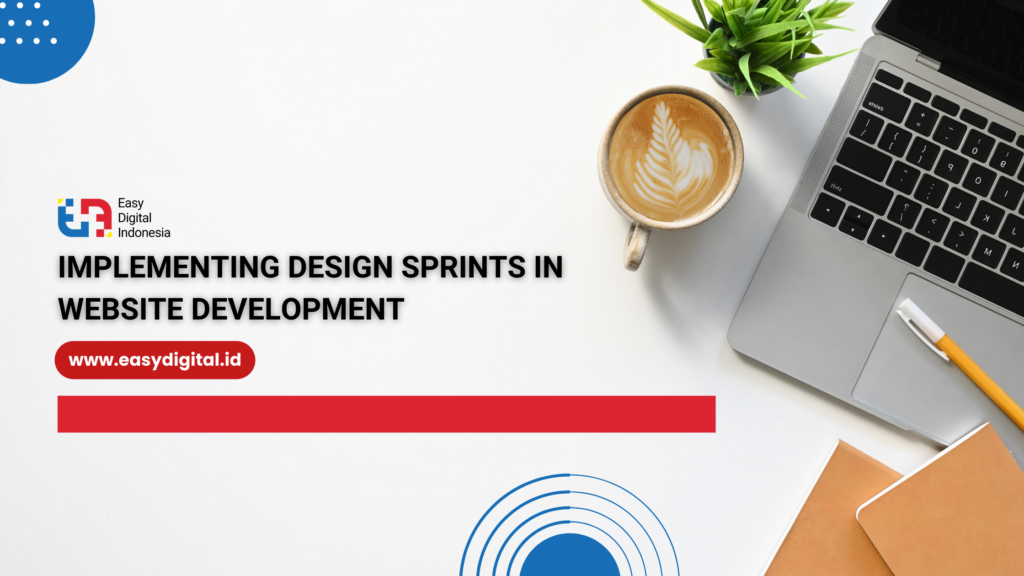Design thinking has emerged as a groundbreaking approach to solving complex problems and driving innovation in today’s fast-paced, ever-changing world. By placing the user at the center of the process, design thinking empowers organizations to rethink challenges, break free from conventional solutions, and create products, services, and experiences that truly resonate with their audiences. This comprehensive guide, Successful Design Thinking Stories to Inspire You, dives into a series of inspiring success stories that highlight real-life examples of how design thinking has transformed industries. Whether you’re a startup founder, a corporate leader, or a creative professional, these stories provide valuable insights and actionable lessons to fuel your innovation journey.
For more expert insights and tailored digital solutions, be sure to visit easydigital.id.
Introduction
In today’s dynamic business landscape, the ability to innovate is more than just a competitive advantage—it’s a necessity. Traditional methods of problem solving often fail to address the multifaceted challenges that modern organizations face. In contrast, design thinking offers a human-centered, iterative approach that blends empathy, creativity, and experimentation. This methodology encourages teams to move beyond conventional solutions, focus on the needs of their users, and continuously refine their ideas through prototyping and testing.
The success stories in this guide exemplify how companies across various industries have harnessed the power of design thinking to drive transformative change. From healthcare and retail to finance and education, these stories illustrate the practical application of design thinking principles and reveal how a simple shift in mindset can lead to breakthrough innovation. As you read through these narratives, you will discover not only inspiring examples but also key strategies that you can apply to your own projects to create meaningful, user-centric solutions.
The Transformative Power of Design Thinking
At its core, design thinking is about understanding people—identifying their needs, empathizing with their challenges, and using that insight to develop innovative solutions. Unlike traditional problem-solving methods that often follow a linear, rigid path, design thinking is flexible, iterative, and collaborative. This approach enables teams to experiment freely, learn from failures, and continuously improve their solutions until they truly meet user needs.
A Human-Centered Approach
Successful design thinking starts with empathy. By immersing themselves in the user’s world, teams gain a deep understanding of the people they are designing for. This empathy-driven research reveals real pain points and uncovers insights that form the foundation of innovative solutions. In every inspiring success story, the journey begins with a commitment to understanding the user—a commitment that ultimately leads to products and services that resonate on a human level.
The Iterative Cycle
Design thinking is inherently iterative. Rather than seeking a perfect solution from the outset, teams are encouraged to develop prototypes, test them with real users, gather feedback, and then refine their ideas. This cycle of continuous improvement not only minimizes risk but also ensures that the final outcome is both innovative and practical. Iteration transforms initial ideas into refined solutions that can adapt to changing needs and market dynamics.
Collaborative Innovation
Collaboration is another cornerstone of design thinking. Bringing together individuals from diverse backgrounds—be it designers, engineers, marketers, or end users—creates an environment rich in diverse perspectives and ideas. This cross-disciplinary collaboration often leads to breakthrough innovations that would not have been possible in a siloed environment. As the success stories in this guide will show, the power of collective creativity is a key driver behind many of the most innovative solutions in today’s world.
Inspiring Design Thinking Success Stories
The following stories highlight how design thinking has been successfully applied in various sectors, turning challenges into opportunities and leading to transformative outcomes.
Success Story 1: Revolutionizing Healthcare Discharge Procedures
The Challenge
A major hospital was struggling with an inefficient discharge process that left patients confused and anxious. The cumbersome system resulted in numerous follow-up calls and additional administrative work for the hospital staff. Traditional approaches to process improvement had failed to resolve the issue, prompting the hospital to explore a design thinking approach.
The Design Thinking Journey
Empathize:
The hospital’s design team began by immersing themselves in the patient experience. They conducted detailed interviews with patients, shadowed staff during the discharge process, and gathered extensive observational data. This deep dive revealed that patients were overwhelmed by the complexity of the paperwork and the lack of clear communication.
Define:
Using these insights, the team crafted a focused problem statement: “How might we streamline the discharge process to reduce patient anxiety and improve communication?” This straightforward, people-focused challenge shaped the next stages of the project.
Ideate:
The team engaged in brainstorming sessions to generate a range of ideas. They explored solutions such as a digital discharge tool that would provide patients with a step-by-step guide, personalized instructions, and timely follow-up reminders. Techniques like mind mapping and the SCAMPER method helped push the boundaries of traditional solutions.
Prototype:
A low-fidelity prototype of the digital discharge tool was developed. This simple, cost-effective version allowed the team to quickly test the concept and gather valuable feedback from patients and staff.
Test:
The prototype was tested in a real-world setting. Patients using the tool reported a significantly better experience, noting that the clear, concise instructions reduced their anxiety. Iterative improvements were made based on user feedback, leading to a final product that reduced discharge-related issues by 35% and improved overall patient satisfaction.
The Outcome
This healthcare success story underscores the transformative power of design thinking. By focusing on empathy and iterative refinement, the hospital was able to streamline a complex process, reduce patient anxiety, and enhance the overall quality of care.
Success Story 2: Transforming the Retail Checkout Experience
The Challenge
An innovative e-commerce company was facing a major challenge: high cart abandonment rates. Shoppers were frustrated by a convoluted, multi-step checkout process that left them feeling insecure about their transactions. This led to significant revenue loss and a poor overall user experience.
The Design Thinking Journey
Empathize:
The design team began by conducting customer interviews and usability tests focused on the checkout process. They observed that users were overwhelmed by the number of steps and expressed concerns about the security of their payment information.
Define:
With these insights, the team defined the problem as: “How might we simplify the checkout process and enhance security to reduce cart abandonment?” This distinct challenge paved the way for innovative thinking.
Ideate:
During brainstorming sessions, the team generated a wide array of ideas, including a single-page checkout process, streamlined form fields, and prominent trust indicators like secure badges. Collaborative workshops allowed the team to explore various design approaches and select the most promising ones.
Prototype:
A low-fidelity prototype of a simplified checkout page was developed. The prototype featured a consolidated checkout process on one page, clear progress indicators, and strategically placed CTAs to guide users through the transaction.
Test:
The prototype was tested with a select group of users, revealing a 25% reduction in cart abandonment rates. Further refinements were made based on user feedback, and the final design was implemented, resulting in a 30% increase in online sales.
The Outcome
This retail case study illustrates how addressing user pain points through design thinking can directly boost conversions and revenue. By simplifying the checkout process and enhancing security, the company not only improved user satisfaction but also significantly increased its sales.
Success Story 3: Reinventing Corporate Communication in Finance
The Challenge
A multinational financial institution was struggling with an outdated online platform. Clients and investors found the interface confusing and cluttered, leading to decreased user engagement and a decline in trust. The institution recognized the need for a radical redesign to modernize its digital presence.
The Design Thinking Journey
Empathize:
The design team conducted extensive interviews and usability tests with investors, clients, and internal stakeholders. They discovered that users were frustrated by the lack of transparency and the convoluted navigation structure that buried critical information.
Define:
Based on these insights, the team defined the challenge as: “How might we redesign our online platform to improve transparency, simplify navigation, and enhance user engagement?” The well-articulated problem statement provided the project with a strong sense of direction.
Ideate:
Collaborative brainstorming sessions brought together insights from various departments, including IT, marketing, and customer service. The team generated innovative ideas such as interactive dashboards, personalized investor portals, and simplified menu structures.
Prototype:
A series of prototypes were developed, starting with basic wireframes and evolving into detailed, high-fidelity models. These prototypes allowed the team to test different user interface concepts and navigation structures with real users.
Test:
User testing revealed that the new design was far more intuitive and engaging. After several iterations and refinements, the final platform was launched, resulting in a 40% increase in user engagement and significantly improved investor satisfaction.
The Outcome
This financial institution’s transformation demonstrates that design thinking can be effectively applied even in traditionally conservative industries. The redesigned platform not only enhanced the user experience but also reinforced the institution’s reputation as a modern, innovative leader.
Success Story 4: Transforming Education Through Digital Innovation
The Challenge
An innovative university faced challenges with its digital learning platform. Students and faculty reported that the interface was cluttered and outdated, which hampered navigation and reduced engagement. The platform was failing to support an effective learning experience.
The Design Thinking Journey
Empathize:
The design team conducted comprehensive research by interviewing students and faculty, as well as observing their interaction with the platform. This research highlighted significant pain points, such as confusing navigation, inaccessible resources, and a lack of engaging content.
Define:
With a clear understanding of the issues, the team defined the challenge as: “How might we redesign our digital learning platform to enhance usability, engagement, and accessibility for students and educators?” This user-centered problem statement guided the project.
Ideate:
During ideation, the team brainstormed a variety of innovative ideas. They explored concepts like personalized dashboards, interactive multimedia content, and streamlined resource navigation. Collaborative workshops, involving educators, students, and IT professionals, ensured a well-rounded approach.
Prototype:
A low-fidelity prototype was developed that featured a clean, intuitive interface and interactive modules designed for ease of use. The prototype was created with accessibility in mind, ensuring that all students could benefit from the new design.
Test:
The prototype was piloted with a select group of students and faculty. Feedback was overwhelmingly positive, with users noting a significant improvement in navigation, engagement, and overall satisfaction. Iterative refinements led to a final platform that increased course completion rates by 20% and enhanced academic performance.
The Outcome
This educational case study demonstrates that design thinking can revolutionize digital learning environments. By focusing on the needs of both students and educators, the university transformed its platform into a dynamic and engaging tool that improved learning outcomes and boosted user satisfaction.
Additional Success Stories and Key Lessons
Expanding Innovation Across Industries
Beyond the success stories outlined above, countless organizations across various sectors have embraced design thinking to drive innovation. For example, in the hospitality industry, hotels have used design thinking to revamp guest services by integrating personalized digital concierge systems. These innovations not only enhanced the guest experience but also streamlined operational processes and boosted revenue.
Similarly, in the public sector, government agencies have applied design thinking to simplify bureaucratic processes, improve service delivery, and engage citizens more effectively. Such projects have resulted in increased public satisfaction and improved overall efficiency.
Key Lessons Learned
From these success stories, several key lessons emerge:
- Empathy is Fundamental: A deep understanding of the user is the foundation of all successful design thinking projects.
- Iteration is Key: Continuous prototyping, testing, and refinement lead to solutions that are both innovative and practical.
- Collaboration Fuels Creativity: Diverse perspectives enrich the ideation process, leading to more comprehensive solutions.
- Clear Problem Definition Guides the Process: A well-articulated problem statement ensures that the team remains focused on addressing the core issues.
- Testing Validates Ideas: Rigorous user testing minimizes risks and confirms that the final solution meets user needs.
These lessons underscore the importance of a user-centered, iterative approach to innovation—a philosophy that can drive transformative change across any organization.
Leveraging Professional Support
Implementing design thinking internally can be challenging, and many organizations find significant value in partnering with professional agencies. Expert partners can accelerate the process, provide tailored strategies, and ensure that your design thinking initiatives are executed flawlessly.
Benefits of Professional Partnerships
- Expert Guidance: Professional agencies bring extensive experience and can offer insights that are specific to your industry.
- Accelerated Implementation: Dedicated teams can streamline the process, reducing the time needed to move from ideation to a market-ready solution.
- Customized Solutions: Professionals develop bespoke strategies that align with your unique business needs and user expectations.
- Ongoing Support: Continuous maintenance and iterative improvements help ensure your digital solutions remain innovative and effective over time.
For more tailored digital solutions and expert guidance on design thinking, be sure to visit easydigital.id. Their comprehensive digital services can help you transform challenges into success stories and unlock new opportunities for your organization.
The Future of Design Thinking
As technology continues to evolve, the potential of design thinking grows even further. Emerging trends such as artificial intelligence, augmented reality, and machine learning are set to redefine the boundaries of innovation. These technologies will enable even more personalized, data-driven solutions that cater to the evolving needs of users.
The future of design thinking is bright, with increased integration of digital tools that enhance collaboration, speed up prototyping, and deliver richer insights through real-time data analysis. Organizations that continue to embrace this human-centered, iterative approach will be well-equipped to navigate the complexities of the digital age and drive sustainable innovation.
Moreover, as the design thinking methodology spreads across industries—from healthcare and finance to education and government—the lessons learned from these success stories will serve as blueprints for achieving even greater breakthroughs. The journey of design thinking is an ongoing process, one that requires continuous learning, adaptation, and collaboration. By staying committed to these principles, you can ensure that your organization remains at the forefront of innovation.
Conclusion
Successful design thinking stories are more than just inspiring tales—they are powerful examples of how a human-centered, iterative approach can drive real, transformative change. Whether it’s revolutionizing healthcare processes, streamlining retail checkouts, reinventing corporate communications, or transforming digital learning platforms, these success stories illustrate the immense potential of design thinking.
By embracing design thinking, you empower your team to deeply understand user needs, clearly define problems, and iteratively refine creative solutions. The lessons learned from these stories highlight the importance of empathy, collaboration, and continuous iteration in developing innovative, user-centered solutions that drive business success.
In today’s competitive and rapidly evolving digital landscape, adopting design thinking is not merely an option—it’s a necessity. Whether you are a startup, a multinational corporation, or an educational institution, the journey of design thinking can help you overcome challenges, drive innovation, and achieve lasting success.
Now is the time to be inspired by these success stories and implement design thinking in your own projects. Invest in the process, collaborate with experts, and continuously refine your ideas to create solutions that truly resonate with your users. With the right mindset, tools, and professional support, your projects can become a testament to the transformative power of human-centered design.
For more insights, digital solutions, and expert strategies on design thinking, be sure to visit easydigital.id. Their expertise and tailored services can help you unlock new opportunities and turn challenges into lasting success stories.
Embrace the journey of design thinking, let these inspiring stories fuel your drive for innovation, and push the boundaries of what’s possible. Happy innovating!



